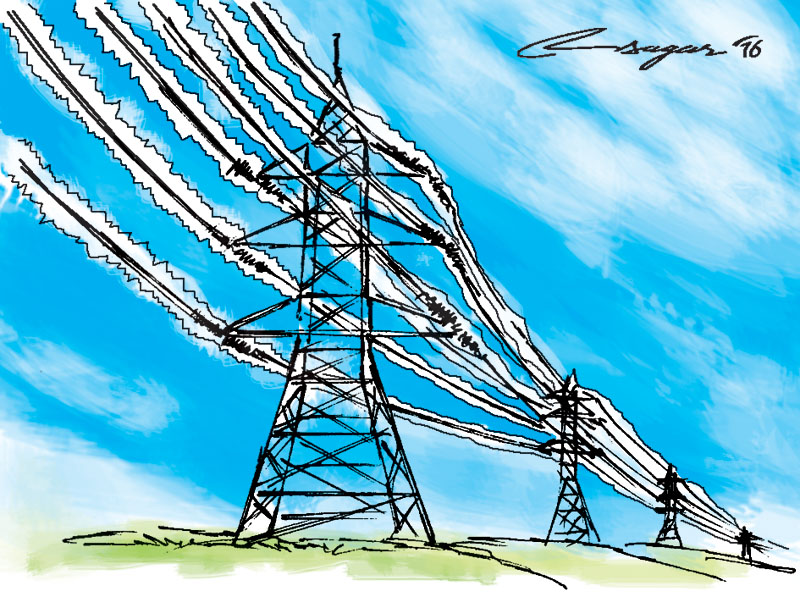Post-earthquake potential: Energy development is important
Attention should be paid to the restoration and reconstruction adopting cleaner, efficient and renewable energy options. For this, the NAR should establish a dedicated unit to coordinate and implement necessary activities in efficient manner
The destruction caused by the recent earthquakes was widespread. Rural areas in the central and western regions were particularly affected. Poorer rural areas have been more adversely affected than towns and cities due to their inferior quality of houses and support structures. According to the post disaster needs assessment (PDNA), the total estimated value of disaster effect caused by the earthquakes is US$ 7 billion. Disaster effects are spread unevenly between public and private sectors.
Government of Nepal is preparing to develop a large-scale recovery program based on the PDNA results. It is expected that the reconstruction works would take momentum after the appointment of the chief executive officer in the National Authority for Reconstruction (NAR).
The sector of housing and human settlements was affected the most. Access to efficient lighting and clean cooking (ELCC) solutions will be the most important factors in the new housing and human settlements. Most of the houses and settlements which were damaged by the earthquakes need restoration or new provisions of energy system for meeting their lighting and cooking energy needs. The reconstruction or recovery plan should have built-in provision for ELCC provisions. Furthermore, policy provision that obliges the house owner to have ELCC solutions is necessary.
Earthquakes have damaged several health infrastructures. Over 80 percent of these affected health facilities were from the most affected districts and this affected the ability of these facilities to respond to the healthcare needs of vulnerable populations in the remote areas. The overwhelming share of damage and losses was borne by the public sector. The recovery and reconstruction plan for the damaged health infrastructure should have a provision of efficient electricity supply to cater to the needs of lighting, refrigeration to preserve the vaccines and to operate medical equipment. The Government while implementing the recovery plan for the health infrastructure should establish policy provision for the efficient electricity provisions in order to provide better medical services.
Electricity supply in most of the education facilities – mostly in rural areas- is either inadequate or absent. The education facilities while they are rebuilt should have the provision of efficient and sufficient electricity supply to operate computers and other teaching aids.
The earthquakes affected about 2,900 structures with cultural, historical and religious heritage values. Major monuments in Kathmandu’s seven World Heritage Monument Zones were severely damaged and many collapsed completely. In addition, in more than 20 districts, thousands of private residences built on traditional lines, historic public buildings, ancient and recently built temples and monasteries, were affected by the disaster, 25 per cent of which were destroyed completely. Most of the cultural heritage sites are located either in urban or peri-urban areas. Most of these areas are connected to grid electricity. There will be two areas to focus while restoring the cultural heritage sites. These are (i) implement efficient lighting provision, and (ii) introduce clean lighting option for backup in case of emergency such as earthquakes. Solar energy has been successfully introduced in many areas for lighting streets. Solar Photovoltaic can also become an effective means for backup energy in case of emergency - that may occur anytime - in the heritage sites.
Electricity generation facilities, both on-grid and off-grid, and distribution networks were damaged severely by the earthquake. In generation side under operation, about 115 MW hydropower facilities were severely damaged, and 60 MW were partially damaged. For generation under construction, about 1000 MW of hydropower projects owned both by Nepal Electricity Authority (NEA) and Independent Power Producers (IPP) have been partially damaged. Regarding the transmission system under operation, seven substations were damaged. Despite this, all the affected transmission substations were restored within a short period of time. However, confirmation about the risks of tower foundation damage, vulnerability of towers due to landslide/soil erosion and structural damage are yet to be confirmed. This would apply in the case of generation projects.
Regarding distribution, about 800 km of distribution lines at different voltage levels (33 kV, 11 kV and 400 V) and 365 transformers at different capacity (from 15 to 300 kVA) were damaged and non-operational. As for off-grid electricity services, about 262 micro-hydro facilities and 115,438 solar home systems (SHS) or small SHS, and 156 institutional solar power systems (ISPS) were damaged and non-operational. About 603,000 households have lost access to electricity, including 91,200 households for grid electricity and the rest for off-grid electricity, either due to houses collapsing or damage to electricity supply facilities.
Restoration of the damaged facilities are necessary; at the same time, the attention should be paid to the restoration and reconstruction adopting cleaner, efficient and renewable energy options. For this, the NAR should establish a dedicated unit to coordinate and implement necessary activities in a more professional and efficient manner.
Adhikari is an energy economist.






